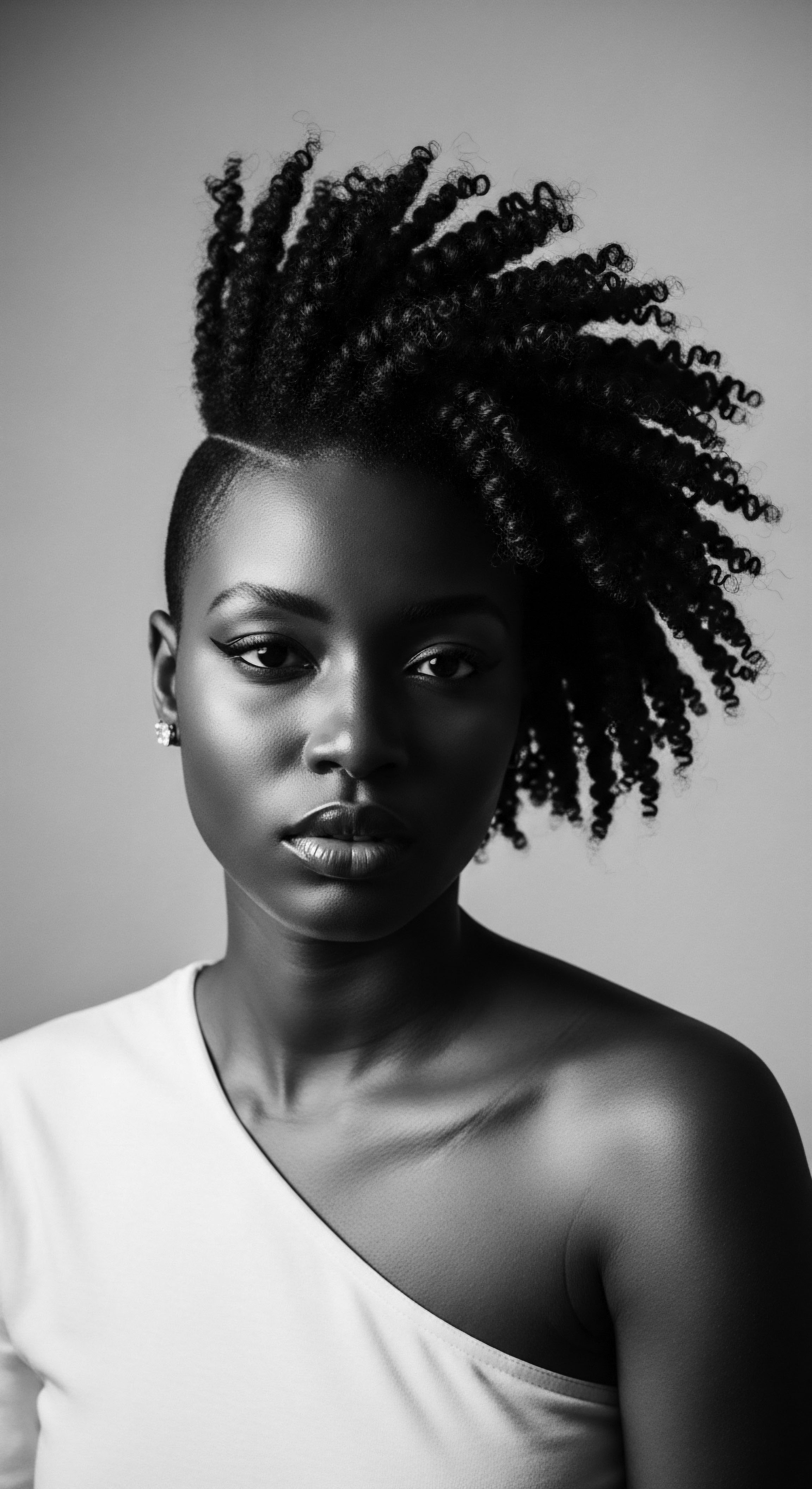
Fundamentals
The concept of Hair Strand Fortification, at its most elemental understanding, refers to the conscious and continuous efforts applied to enhance the intrinsic resilience, structural integrity, and overall vitality of individual hair fibers. It is a commitment to nurturing the hair from its very core, ensuring each strand can withstand the myriad forces that seek to compromise its strength and beauty. This is not a fleeting notion of superficial alteration; it is a profound dedication to building enduring hair health, creating a foundation that supports natural growth and safeguards against various forms of damage.
Considering the delicate nature of a single hair strand, a structure primarily composed of a protein known as Keratin, its susceptibility to environmental stressors, styling manipulations, and even internal physiological shifts becomes evident. The outermost layer, the Cuticle, composed of overlapping scales, serves as a protective shield. When these scales are smoothed and aligned, the strand reflects light, appearing lustrous, and is better equipped to prevent moisture loss and external aggressors from infiltrating its inner layers.
The central Cortex holds the majority of the hair’s mass, containing the fibrous proteins that determine its elasticity and tensile strength. True fortification involves practices that safeguard this intricate biological architecture.
From a foundational perspective, Hair Strand Fortification embodies a set of practices designed to prevent breakage, reduce thinning, and promote the hair’s natural ability to flourish. It involves acknowledging that hair is a living extension of our bodies, responsive to nourishment, protection, and gentle handling. The path to fortification begins with simple, thoughtful gestures, recognizing that every step in a hair care routine carries the potential to either strengthen or weaken the delicate fiber.
Hair Strand Fortification cultivates resilience within each fiber, building enduring strength and vitality through dedicated care.
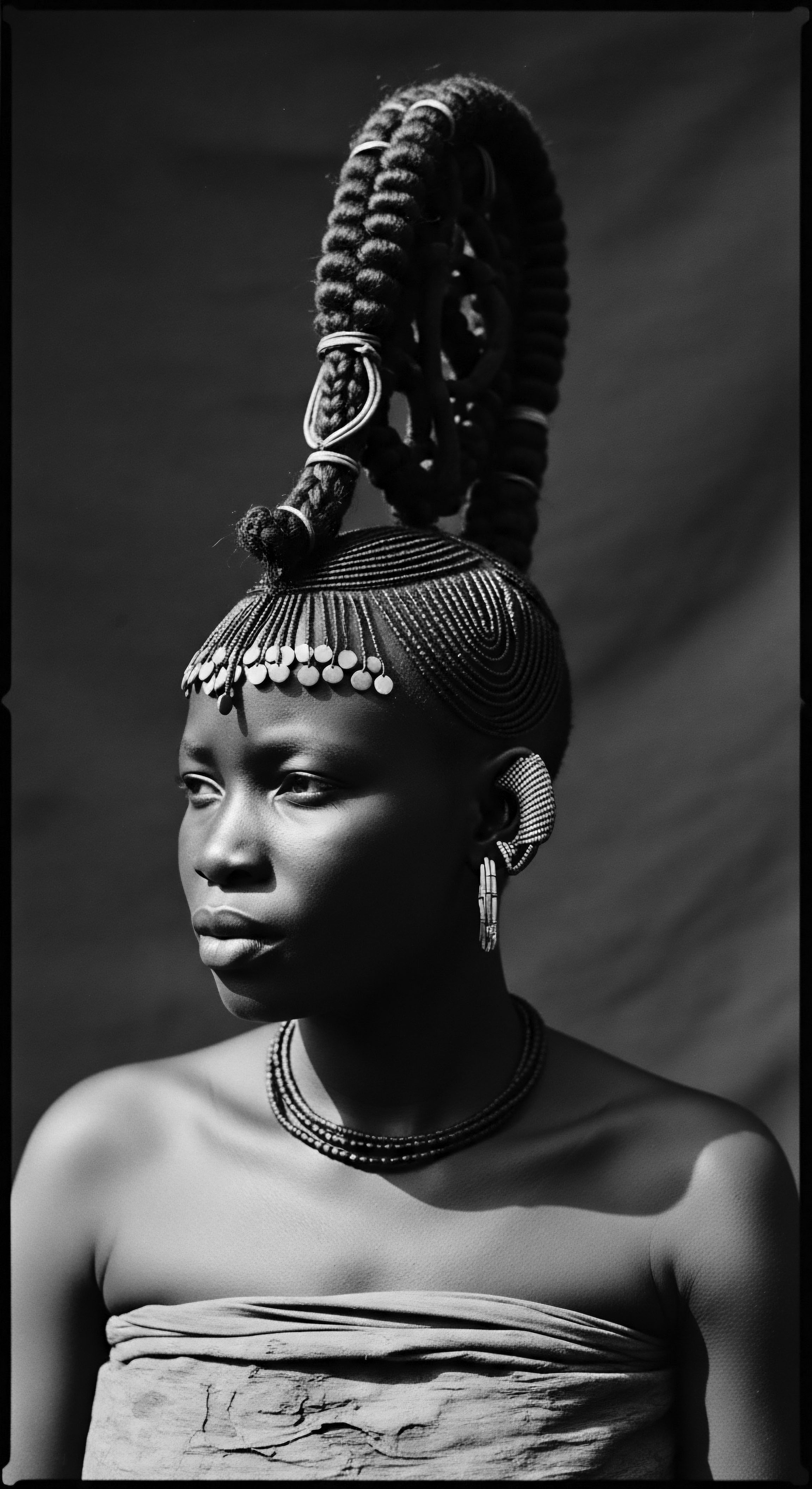
Elemental Resilience ❉ Initial Understandings
For those embarking on a deeper appreciation of hair care, the fundamental meaning of fortification can be glimpsed in everyday acts. Hydration, for instance, is paramount. Just as a strong tree needs ample water, a hair strand requires consistent moisture to remain supple and pliable.
Dryness renders hair brittle, making it susceptible to snapping under minimal tension. Furthermore, the practice of detangling with care, utilizing tools that glide through the hair rather than tearing, significantly reduces mechanical stress that weakens strands over time.
- Moisture Retention ❉ The application of water-based products and emollients to prevent the hair from drying out, thereby preserving its natural elasticity and preventing a brittle state.
- Gentle Handling ❉ Employing soft brushes, wide-tooth combs, and finger-detangling techniques to minimize friction and breakage during styling and maintenance.
- Nutrient Delivery ❉ Ensuring the hair receives essential proteins and vitamins, often through topical applications or a balanced dietary intake, to support the natural integrity of its keratin structure.
These basic tenets, though seemingly straightforward, form the bedrock upon which more complex and culturally resonant fortification practices are built. They speak to an intuitive understanding that healthy hair is strong hair, and that strength arises from careful attention to its inherent needs. The commitment to these initial steps lays the groundwork for a broader, more profound engagement with Hair Strand Fortification.
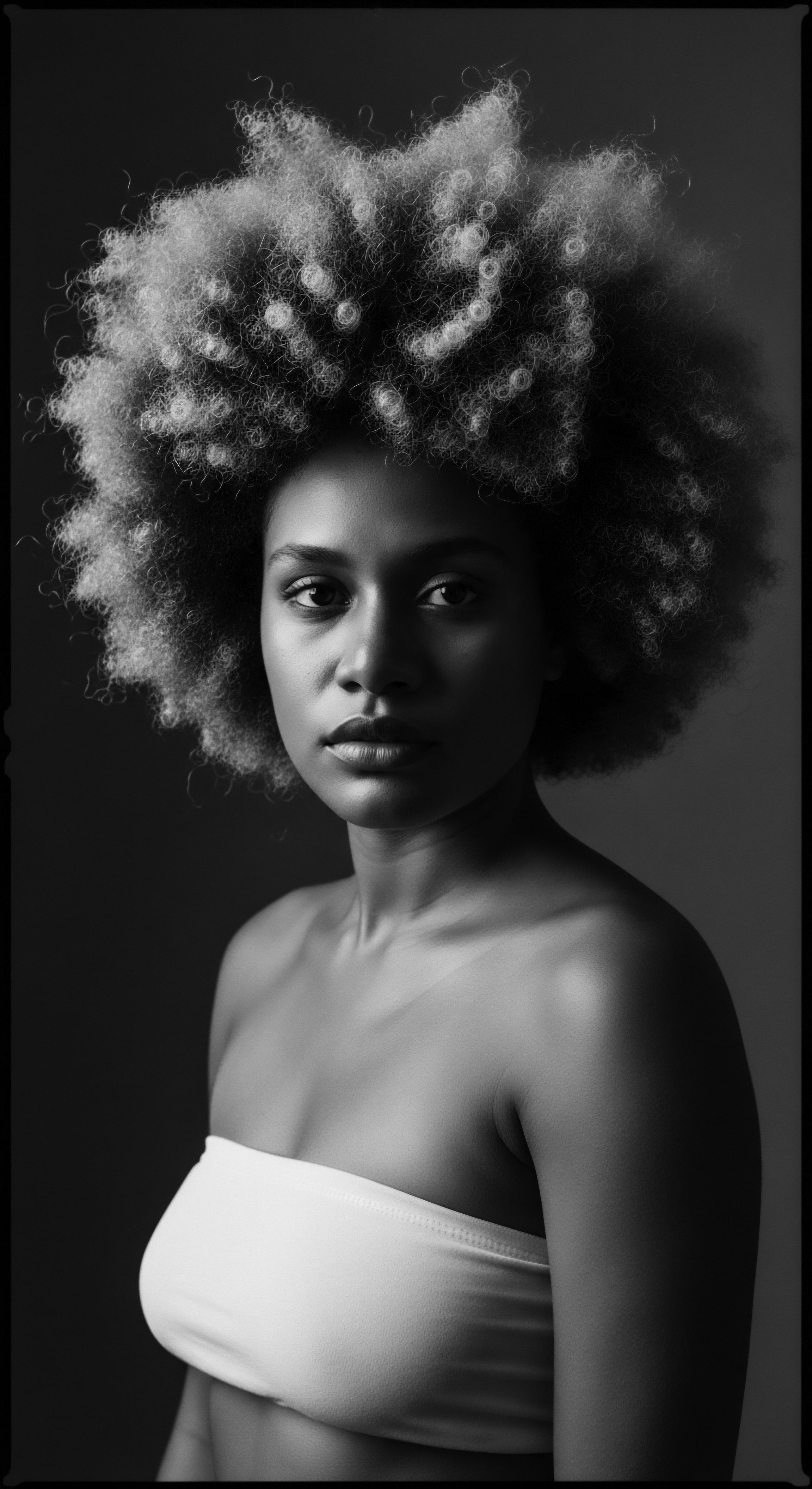
Intermediate
Moving beyond the foundational tenets, the intermediate appreciation of Hair Strand Fortification reveals a deeper interplay between the hair’s inherent structure and the external influences it encounters daily. This level of understanding considers not only the immediate needs of the strand but also the cumulative effects of various elements upon its long-term integrity. Fortification, seen through this lens, involves deliberate strategies to reinforce the hair’s natural defenses, addressing vulnerabilities that arise from environmental exposure, styling habits, and even the subtle impacts of one’s personal wellness journey.
The cortex, the hair’s primary structural component, is where the majority of its strength and elasticity resides. Fortifying practices at this level often focus on supporting the protein matrix within the cortex, providing elements that can replenish depleted keratin or shield it from degradation. Considerations extend to the cuticle, the protective outer layer; when its scales are raised or damaged, the hair is left exposed and vulnerable, leading to moisture loss and increased susceptibility to breakage. Intermediate fortification therefore encompasses methods that smooth, seal, and support this critical barrier, preserving the hair’s internal strength while enhancing its outward appearance.
Intermediate fortification navigates the intricate relationship between hair’s biological blueprint and its interaction with the world, securing its structural integrity.

Building Resilience ❉ Beyond the Surface
An intermediate perspective on Hair Strand Fortification acknowledges that the hair’s ability to resist damage is a dynamic process, influenced by a spectrum of factors. It recognizes that coarse hair, often defined by a thicker diameter of individual strands, may possess different needs for fortification compared to fine hair, which is delicate and thin. Likewise, the unique spiral and S-patterns of curly and coily hair, often dense in their configuration, necessitate specific approaches to maintain their structural fortitude, given their inherent propensity for dryness and tangling.
For generations, cultures have understood the profound connection between nature’s bounty and hair’s resilience. The application of oils and butters, for instance, has long been a widespread ancestral practice across continents, valued for its ability to moisturize and protect hair. In West Africa, Shea Butter, extracted from shea nuts, has been used for centuries to protect hair from environmental conditions, leaving it soft and manageable.
Similarly, in Ancient Egypt, Castor Oil was a staple for conditioning and strengthening hair, often mixed with honey and herbs to promote growth and shine. These historical applications speak to an early, intuitive understanding of fortification principles.
The intentional layering of products to create a protective barrier, the use of deep conditioning treatments to infuse moisture and fortifying ingredients, and the strategic application of heat protection are all examples of intermediate fortification strategies. This stage also involves a discerning eye towards ingredients, recognizing that certain botanical extracts and protein compounds can actively contribute to a strand’s resilience.

Strategies for Enhanced Strand Strength
To truly fortify hair at an intermediate level, one begins to integrate a more sophisticated understanding of hair’s needs. This involves:
- Targeted Conditioning Treatments ❉ Incorporating conditioners designed to penetrate the hair shaft, delivering restorative proteins or deeply hydrating elements that reinforce the cortex and smooth the cuticle. Such treatments often feature ingredients like Keratin, a fibrous protein that is the building block of hair, responsible for its strength and overall health.
- Protective Styling Practices ❉ Utilizing styles such as braids, twists, or buns that minimize exposure to harsh environmental elements and reduce the need for daily manipulation, thereby preserving the integrity of the hair strands.
- Scalp Wellness Focus ❉ Recognizing that a healthy scalp is the origin point for strong hair. Practices that stimulate blood flow to the scalp, deliver nutrients, and maintain a balanced microbiome contribute directly to the production of robust hair fibers. For example, traditional Ayurvedic practices often include scalp massages with warm oils to stimulate hair growth and improve overall scalp health.
The exploration of these practices uncovers a continuous conversation between ancient wisdom and contemporary understanding, revealing that the drive to fortify hair is a deeply ingrained human endeavor, passed down through the ages.
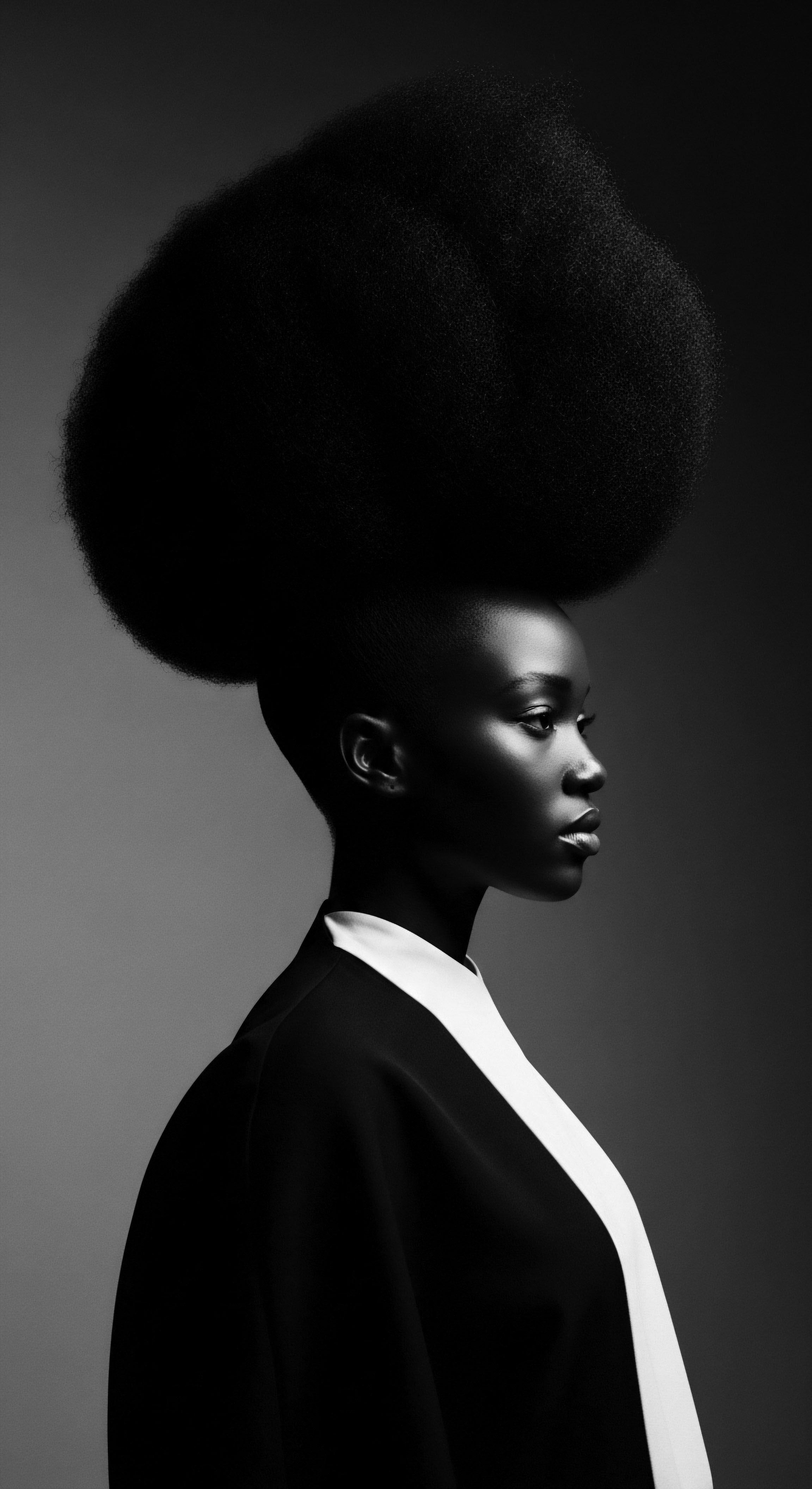
Academic
The academic delineation of Hair Strand Fortification transcends simplistic notions of strength, positing it as a complex interplay of biochemical integrity, morphological resilience, and the cumulative effects of both intrinsic and extrinsic factors that shape the hair fiber’s enduring capacity. This rigorous interpretation acknowledges that fortification is not a singular event but a continuous process, grounded in the intricate molecular structure of the hair shaft and significantly influenced by the care practices, environmental exposures, and genetic predispositions, particularly pronounced within textured hair, Black, and mixed-race hair experiences.
At its core, Hair Strand Fortification, in an academic sense, refers to the scientific endeavors and traditional practices aimed at enhancing the Tensile Strength, elasticity, and resistance to degradation of the hair fiber. The hair shaft, a filamentous biomaterial, is predominantly composed of keratins, which are highly organized proteins. These proteins form a complex hierarchical structure, from the alpha-helical coiled-coil dimers to intermediate filaments within the cortical cells.
The outermost cuticle, a layer of flattened, overlapping cells, provides the primary barrier against physical and chemical assaults. Fortification, therefore, involves strategies that either replenish the keratin content, particularly within the cortex, or reinforce the cuticle’s protective function, thereby reducing susceptibility to breakage and environmental damage.
Hair Strand Fortification, academically speaking, is the scientific and traditional pursuit of enhancing hair’s biochemical integrity and morphological resilience.
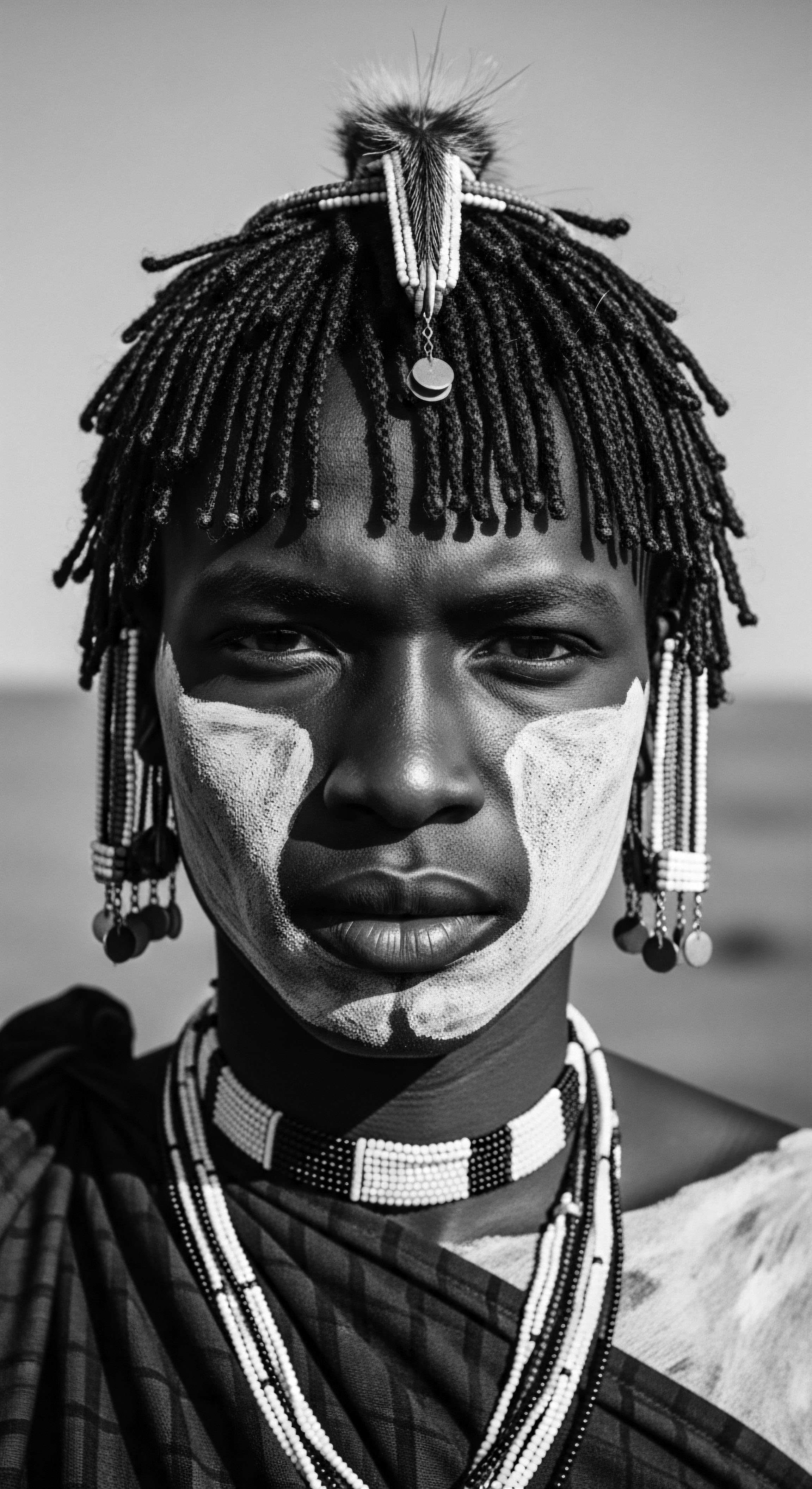
The Biochemical Underpinnings of Fortitude
From a biochemical standpoint, the integrity of the hair strand relies heavily on the disulfide bonds formed between cysteine amino acids within the keratin proteins. These bonds contribute significantly to hair’s inherent strength and its ability to maintain its shape. Chemical treatments, such as relaxers or dyes, can disrupt these bonds, leading to a compromised structure and increased fragility.
Academic inquiry into fortification often explores compounds that can reform or protect these bonds, such as protein hydrolysates, amino acid derivatives, and plant-based protein complexes. For example, certain fortifying serums are formulated with ingredients like Chia Seed, Bio-Fermented Bamboo Leaf, and Plant-Based Protein, which penetrate the hair cortex to build strength from within while forming a protective scaffold around strands, preventing breakage.
The hair’s porosity, or its ability to absorb and retain moisture, plays a crucial role in its fortification needs. Textured hair, especially coily and curly patterns, often exhibits higher porosity due to the natural lifting of its cuticle scales, making it more prone to moisture loss and dryness. This inherent characteristic necessitates a focus on moisture-centric fortification strategies, often incorporating humectants, emollients, and occlusives to seal the cuticle and lock in hydration. The efficacy of these compounds is measured not only by their ability to reduce immediate breakage but also by their long-term impact on the hair’s mechanical properties, such as its bending stiffness and fatigue resistance.
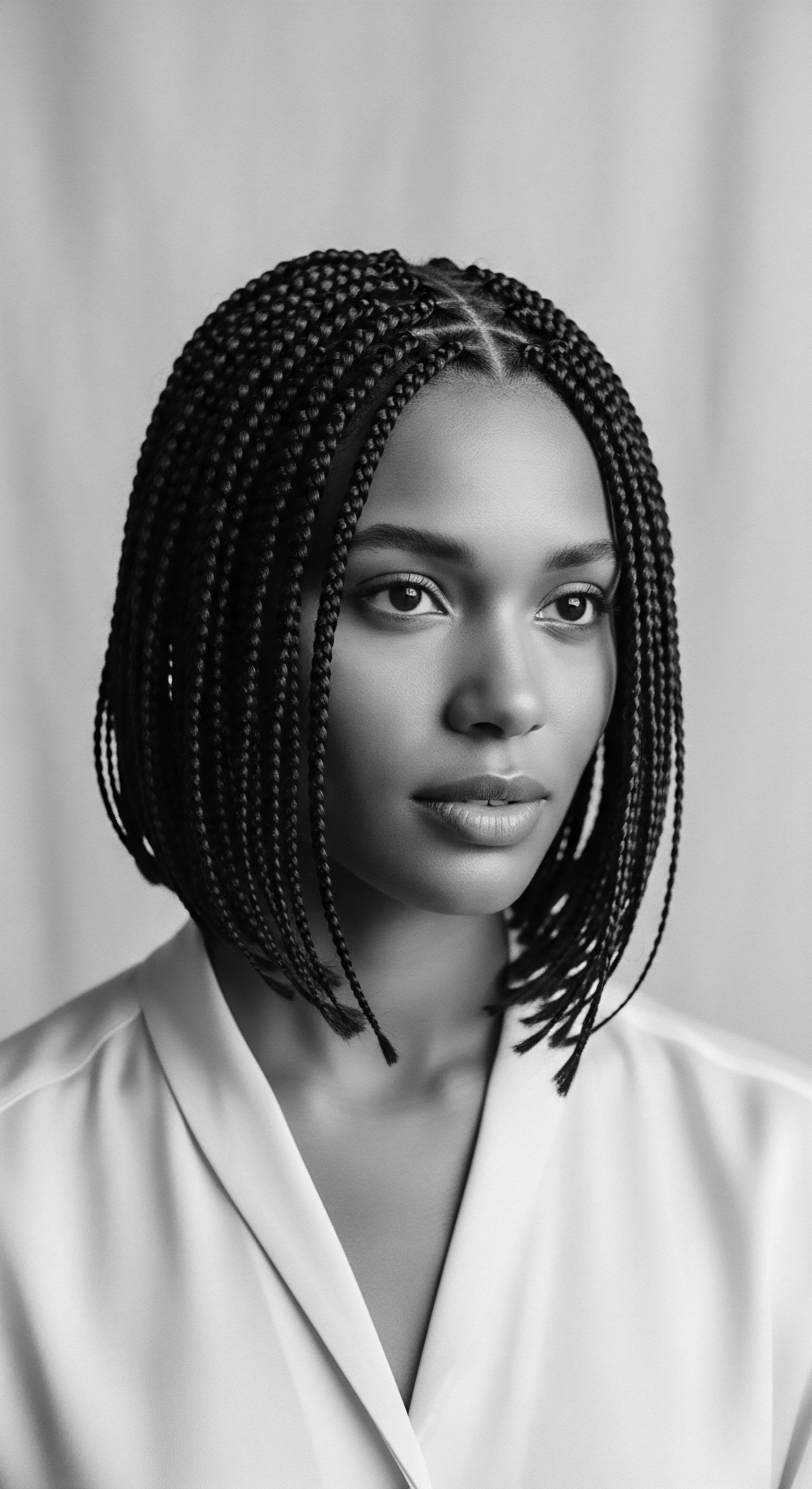
Ancestral Wisdom ❉ A Case Study in Mbalantu Hair Fortification
To comprehend the profound meaning of Hair Strand Fortification, especially within the context of textured hair heritage, one must look to the ancient and ongoing practices that have long embodied these principles. A compelling case study unfolds with the Mbalantu Women residing in parts of Namibia and Angola, who have for centuries cultivated ankle-length hair through deeply embedded ancestral rituals. Their hair care is not merely aesthetic; it is a profound declaration of identity, status, and connection to a lineage of resilience, passed down through generations.
The Mbalantu women’s meticulous approach to hair fortification begins early in a girl’s life, around the age of twelve. At this tender stage, specific ceremonies are held to promote hair development. The hair is initially coated with a thick paste crafted from the finely powdered bark of the Omutyuula Tree (Acacia reficiens) blended with fat. This mixture remains on the scalp for years, providing a continuous, protective environment.
The omutyuula bark, likely rich in tannins or other plant compounds, would have contributed to strengthening the hair shaft and potentially offering antimicrobial benefits to the scalp, while the fat provided sustained moisture and protection from environmental elements. This long-term, deliberate application exemplifies a sophisticated understanding of hair preservation, far predating modern scientific nomenclature.
As the girls mature, typically around age sixteen and preceding the significant ‘Ohango’ initiation ceremony, the paste is carefully loosened, revealing the hair. At this juncture, fruit pips and long sinew strands are meticulously attached to the hair, eventually forming the characteristic ‘Eembuvi’ braids. These braids, often reaching the ground, symbolize a girl’s transition into womanhood and signify her new status.
The addition of these external elements serves as a remarkable instance of physical fortification, providing structural support to the growing hair, distributing weight, and preventing mechanical stress that would otherwise lead to breakage for such extraordinary length. This practice demonstrates an intuitive comprehension of ‘load-bearing’ for hair, allowing it to achieve and maintain lengths almost unimaginable in other contexts.
The Mbalantu ritual illustrates several key aspects of Hair Strand Fortification, interpreted through a modern scientific lens:
- Continuous Topical Nourishment and Protection ❉ The omutyuula and fat paste acts as a long-term, protective coating, analogous to modern leave-in treatments or masks, preventing moisture loss and external damage over extended periods. This continuous application supports the cuticle and helps maintain the integrity of the hair shaft.
- Physical Reinforcement and Load Distribution ❉ The integration of fruit pips and sinew strands into the braids provides external structural support, reducing tension on the natural hair fiber and mitigating breakage that would occur under its own considerable weight. This is a practical, ancestral solution to managing extreme length and density.
- Holistic Scalp Health ❉ The long-term application of the paste to the scalp likely provided a consistent environment for hair growth, possibly reducing inflammation or providing essential nutrients that support a healthy follicle. A healthy scalp is, after all, the genesis of fortified hair.
- Ritual and Community as a Fortifying Practice ❉ The ceremonial nature of these practices, performed within a communal context, adds a psychosocial dimension to fortification. The shared knowledge, generational transmission, and cultural significance of maintaining these lengths reinforce adherence to practices that are physically beneficial for the hair. This cultural preservation contributes to sustained hair health across generations, becoming a collective fortifying endeavor.
| Mbalantu Traditional Practice Application of Omutyuula tree bark and fat paste for years (Iwalaiye, 2024; Gondwana Collection, 2012). |
| Modern Scientific Interpretation of Fortification Sustained external conditioning and protective barrier formation, preventing moisture loss and environmental damage to the cuticle and cortex. |
| Mbalantu Traditional Practice Integration of fruit pips and sinew into 'Eembuvi' braids (Iwalaiye, 2024; Gondwana Collection, 2012). |
| Modern Scientific Interpretation of Fortification External structural support for individual strands and overall hair mass, mitigating mechanical stress and reducing breakage under extreme length. |
| Mbalantu Traditional Practice Ceremonial initiation and generational transmission of practices (Iwalaiye, 2024; Afriklens, 2024). |
| Modern Scientific Interpretation of Fortification The embedding of hair care into cultural identity ensures consistent, long-term adherence to beneficial practices, reinforcing hair health across generations. |
| Mbalantu Traditional Practice The Mbalantu legacy offers profound insights into enduring hair vitality, demonstrating that ancestral wisdom often aligns with contemporary scientific understanding of Hair Strand Fortification. |
The Mbalantu women’s deep connection to their hair and its care serves as a testament to the fact that fortification, far from being a modern invention, is a deeply ingrained ancestral pursuit. Their practices, honed over centuries, stand as empirical evidence of effective hair preservation, providing a powerful narrative for how hair is not merely adorned but actively strengthened as an extension of identity and heritage. This long-standing tradition illustrates that robust hair is often a product of consistent, culturally resonant, and well-understood practices, whether the underlying science is articulated or simply embodied through generational wisdom.
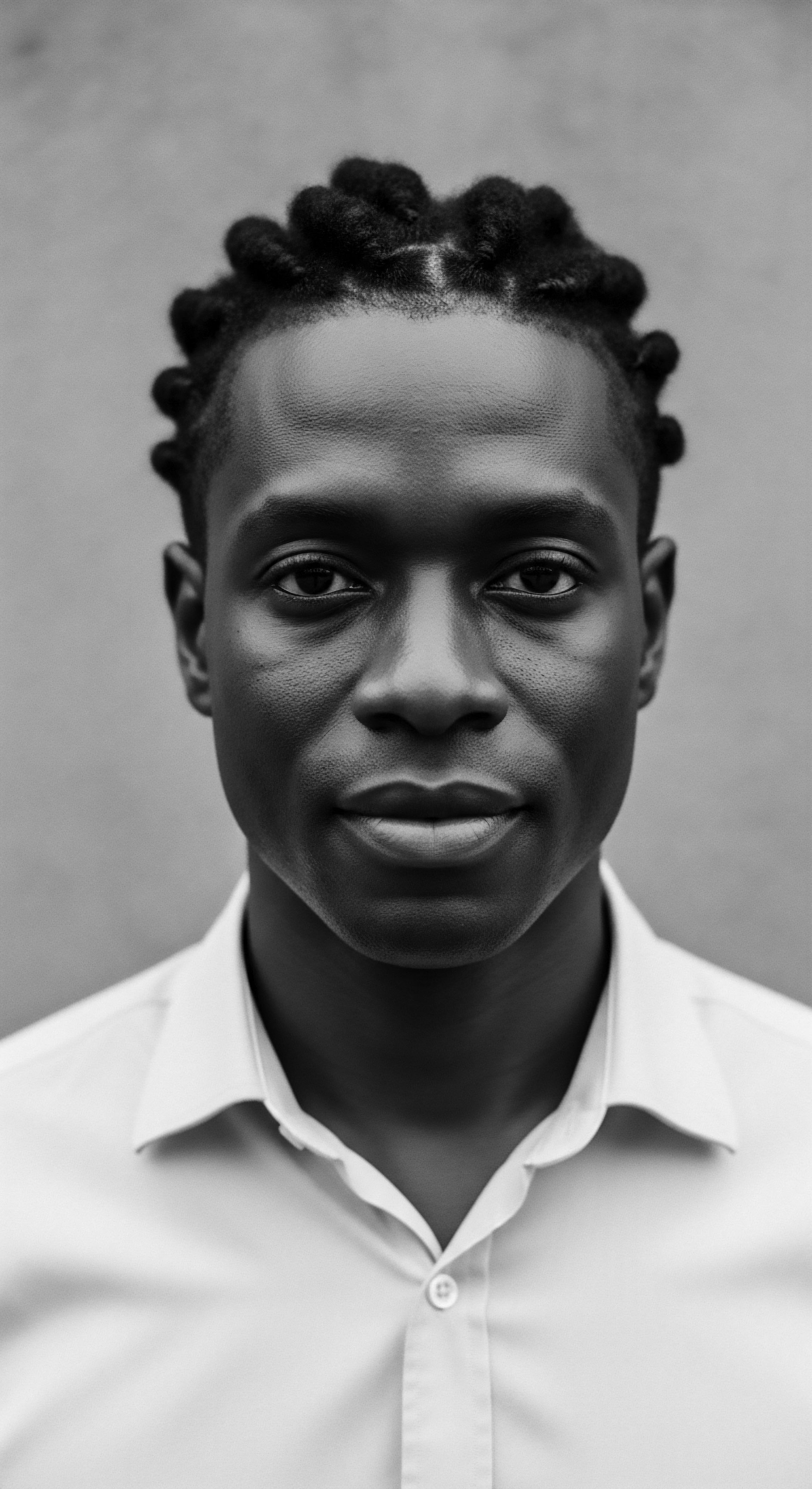
Cultural Variations in Hair Fortification
Beyond the Mbalantu, the global tapestry of textured hair reveals a multitude of ancestral fortification practices that align with contemporary scientific principles. In Ayurvedic traditions from India, often practiced for centuries, the strategic use of herbs like Amla, Bhringraj, and Coconut Oil for scalp massages and conditioning is central to strengthening hair follicles and preventing hair loss. Amla, for example, is a powerhouse of vitamin C and antioxidants, known to strengthen hair follicles, prevent hair loss, and even prevent premature graying. These practices support the notion that healthy hair begins at the root, with robust scalp health leading to more resilient strands.
Similarly, in various African communities, ingredients like Shea Butter, Baobab Oil, and Hibiscus have been revered for their fortifying properties. Shea butter, rich in fatty acids and vitamins, protects hair from environmental damage, while baobab oil provides moisture to dry, brittle hair and strengthens weak strands. Hibiscus, a powerful ingredient, provides vitamins and amino acids that strengthen roots and reduce thinning.
These examples demonstrate a sophisticated traditional knowledge of botanicals and their application to enhance hair integrity and vitality, echoing the modern understanding of nutrient delivery and structural support. The consistent use of natural ingredients by these communities highlights a historical emphasis on holistic hair wellness, where fortification is seamlessly integrated into daily life and cultural identity.

Reflection on the Heritage of Hair Strand Fortification
As we draw this exploration to a close, a profound truth arises ❉ Hair Strand Fortification, in its essence, is a continuous conversation between our ancestral past and our unfolding future. It is a dialogue whispered through generations, carried in the textures of our hair, and affirmed by the enduring wisdom of our forebears. The meaning of fortification extends far beyond the biochemical; it becomes a spiritual endeavor, a deliberate act of reverence for the strands that have borne witness to journeys, joys, and triumphs across time. Our hair, particularly for those of Black and mixed-race heritage, is not merely a biological appendage; it is a living archive, a sacred antenna connecting us to the spiritual realms and the accumulated knowledge of our ancestors.
The story of hair care, from the meticulous rituals of the Mbalantu women to the diverse practices across the diaspora, reminds us that the quest for strong, vibrant hair is deeply interwoven with identity and cultural preservation. These ancestral practices, often rooted in profound respect for nature’s gifts, speak to an innate understanding of what it means to truly fortify. They underscore that healthy hair is a symbol of resilience, a silent narrative of survival and beauty against odds. We are not just tending to physical strands; we are tending to legacies, ensuring that the stories held within each coil and curl continue to flourish.
Understanding Hair Strand Fortification, then, becomes an invitation to reconnect with these rich histories. It prompts us to seek out and honor the wisdom that has been passed down, to appreciate how traditional knowledge often aligns with, and sometimes even predates, modern scientific discoveries. This heritage-focused perspective transforms routine care into a ritual, a moment of connection with those who came before us, and a powerful affirmation of self. The ongoing journey of fortification, whether through ancient oils or cutting-edge formulations, is a testament to the boundless ingenuity and deep spiritual connection that communities have always held for their hair.
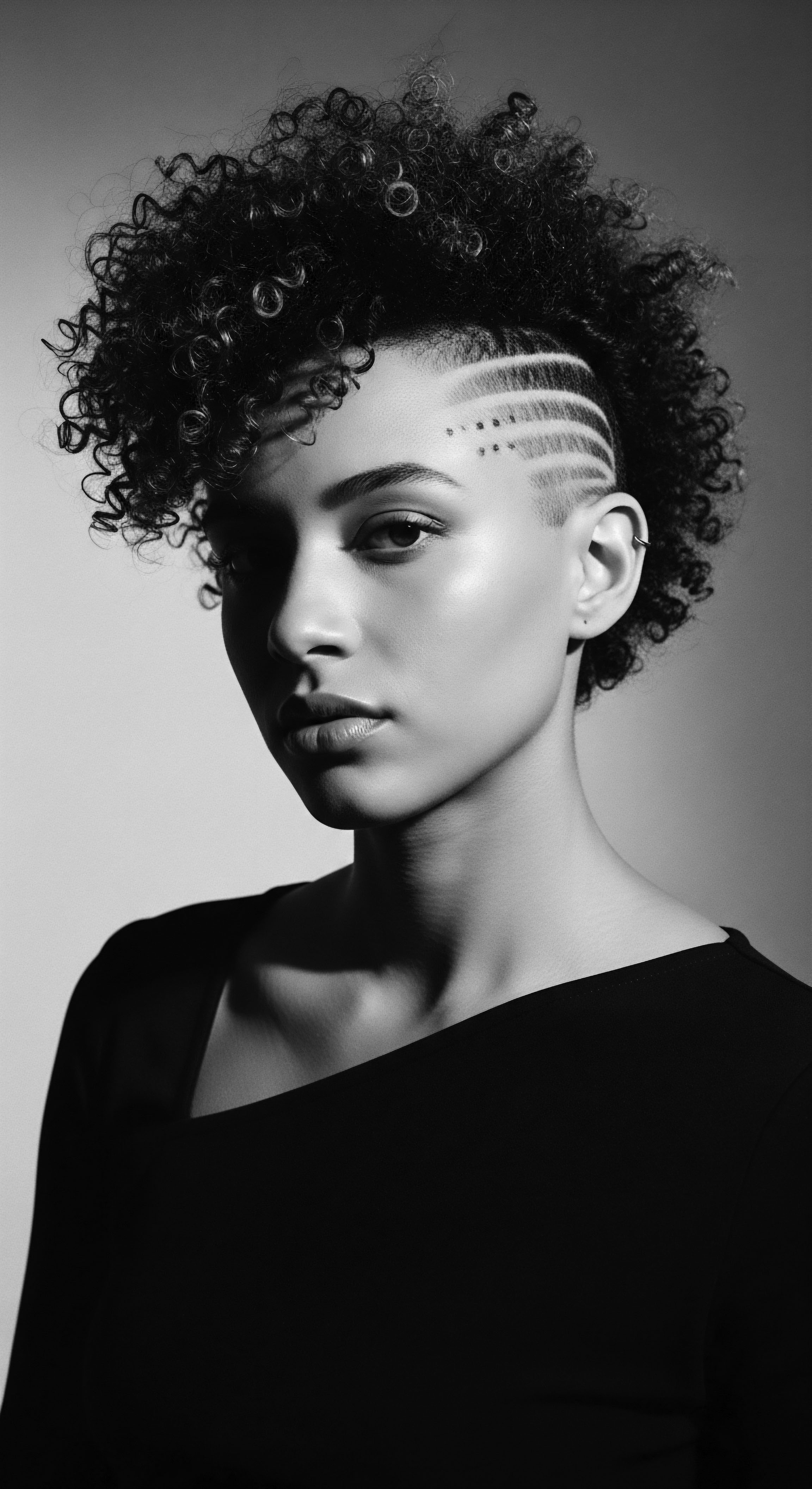
References
- 22 Ayur. (n.d.). The Ancient Natural Ways of Hair Care Across Continents.
- Beauty of the Bible. (2024). Hair Care Secrets of the Past ❉ What Our Ancestors Used for Healthy Hair.
- Afriklens. (2024). African Hairstyles ❉ Cultural Significance and Legacy.
- AYANAE. (2024). Powerful African and Asian Herbs for Hair Growth ❉ Nature’s Remedies.
- Natural Hair Rules. (2024). From Ancient Remedies to Modern Cosmetics with African Herbs and Spices.
- NowIamNappy. (2020). Ambunu for Hair | Ancient African Secret for Hair Growth. YouTube.
- Substack. (2025). Ancestral Hair Rituals to Nourish Your Hair and Soul.
- Orlando Pita Play®. (2023). The Science of Strand Strength ❉ Our Breakthroughs in Hair Fortification.
- Saar, B. (2019). The Afro ❉ More Than a Hairstyle. Books & ideas – La Vie des idées.
- Iwalaiye, T. (2024). Meet the tribe with the longest hair in Africa ❉ The secrets of their ankle-length hair.
- Gondwana Collection. (2012). Mbalantu – The eembuvi-plaits of the Women.
- O’Keefe, R. L. (2024). Historical Perspectives on Hair Care and Common Styling Practices in Black Women.
- Saatwika Ayurveda. (2023). The Ultimate Ayurvedic Hair Care Routine for Healthy Hair.
- ResearchGate. (2024). Preparation and application of a fortified hair reference material for the determination of methamphetamine and amphetamine.
